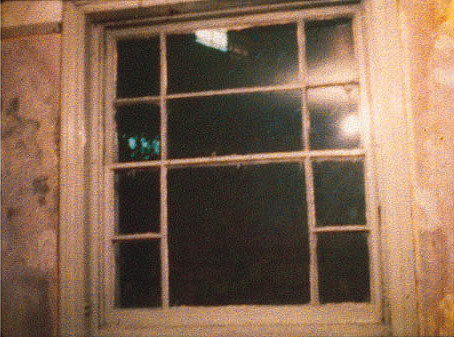
1973, UK, 2x16mm, colour, silent, 12 min.
An investigation into ways of presenting cubist space on the flat surface of the film screen. The image is a view through a window, the window-frame providing a constant spatial reference point. The film is just as it was filmed in the camera. A mesmerizing journey through time and space.
“The format of the film frame is modified by filming through the shape of a window. The camera tracks to viewpoints on an arc inside a room. The centre of the arc coincides with the centre of the window frame, which occupies a constant position on the screen. The perspective of the window frame changes as the camera moves to new positions on the arc, and different aspects on the view outside are discovered. The window plane functions like a mirror. As the camera rotates around the window axis, new positions established on one side of the arc area complemented by balancing points on the opposite sector; and like the first law of reflected light:
angles of incidence = angles of reflection
The film took thirty hours to shoot, and the filming was conducted to a score, which was written during the actual time of filming. Incorporating the composition into the shooting period allows for a greater degree of flexibility: chance occurrences may be more easily incorporated, and it is less mechanistic than copying from a prescribed score or model. In the same way that the filming pattern was not determined before-hand, the film has not undergone any post-camera stages. All the editing was done in-camera”.
William Raban
